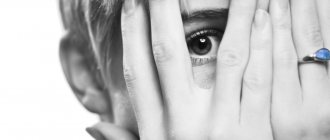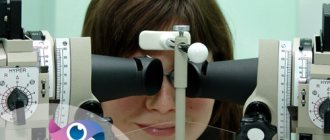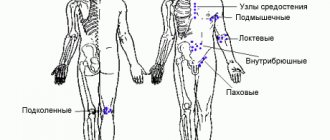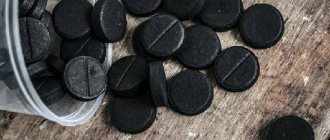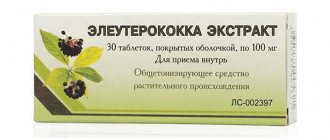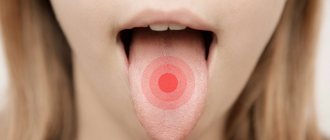Where is increased fat content possible?
The content of the article
Problem areas:
- upper back;
- facial part, especially the chin, forehead and cheeks;
- cervical and thoracic parts of the body;
- genitals in both sexes;
- peripapillary zone.
These are the most common and most common, but there may be others. The only places on the body where acne cannot appear are the palms and feet. Due to the too thick and rough layer of the epidermis, incapable of this kind of inflammation.
How do changes in the functioning of the sebaceous glands affect the condition of the skin?
Changes in sebum secretion are one of the factors in the development of acne. Sebocytes in the sebaceous glands synthesize free fatty acids even without the participation of propionibacteria. This makes it likely that aseptic inflammation will develop without the presence of a bacterial component.
With hyperseborrhea, not only the amount of sebum produced changes, but also its composition, in particular, the content of linoleic acid in it decreases. Its deficiency can cause follicular hyperkeratosis40. This is due to the ability of linoleic acid to regulate keratinocyte differentiation10.
Regulation of the level of sebum secretion is also entrusted to hormones. Estrogens suppress, and progesterone and androgens, on the contrary, stimulate the process of sebum production.
Against the background of hyperseborrhea and increased keratinization of the skin, inflammation and blockage of the sebaceous gland channels occurs. Since it becomes impossible for air to get inside them, conditions are created for the proliferation of P. Acnes10.
Causes
- Dry skin;
- Hormonal changes in the whole body;
- Infection;
- Too much sebum production.
In addition to these reasons, there is another factor that was recently established by scientists - heredity.
Let's look at each reason in more detail.
Dry skin
One of the most common reasons. Due to dryness, the skin exfoliates and its particles clog the pores, which causes inflammation. It is very important to consider several points that cause excessive dry skin:
- Age. Over the years, the skin gradually loses many of its important properties, which include moisture retention.
- Environment. Dry and cold air, low humidity, and so on.
- Shower with hot water. Leads to the destruction of the protective layer of the skin.
- Allergic diseases.
- Hygiene products. Using regular soap on sensitive areas of the skin: facial skin, intimate areas, can cause dryness and cause acne.
Hormonal background
The reason lies in the incorrect proportion of sex hormones in the blood. Androgens (male hormones) play a very important role here. If their level is exceeded, then excess secretion begins from the sebaceous and sweat glands, which is the reason for the appearance of acne. You can also isolate progesterone, a hormone secreted in pregnant women. Leads to clogging of pores and, as a result, sebaceous inflammation appears.
Lack of estrogen can also cause excessive oily skin.
What do people with oily skin suffer from?
If you have oily skin, it means that the sebaceous glands on your face produce too much sebum. In addition, they can expand and become clogged with comedones. Such skin appears to be covered with mini-craters and looks unaesthetic. At the same time, the oiliness of the skin surface itself does not indicate that you will definitely have acne.
In some cases, after washing, a feeling of tightness may occur, this indicates a violation of the lipid barrier of the epidermis - a lack of ceramides in it, which are responsible for creating a protective film on the skin.
The lipid barrier could be damaged as a result of improper care, for example, frequent use of aggressive lotions containing alcohol.
Sebum production
There are 3 factors that can affect the amount of sebum production. Androgen, or rather its excess in the blood, is one of the reasons. Rarely, but still there is a special disease called “seborrhea”. And of course, a very common cause in the 21st century is poor nutrition.
Here is a list of products that promote the active secretion of sebum:
- carbonated drinks;
- alcoholic drinks;
- products in the production of which dyes were used;
- caffeinated drinks (black tea, coffee;
- sweet and flour;
- spicy, smoked food.
What are sebaceous glands?
Each hair is equipped with a sebaceous gland, and sometimes more than one. Their excretory ducts open in the hair follicle and release about 20 g of sebum per day. The composition of sebum includes29:
- fatty acid;
- glycerol;
- alcohols;
- wax esters;
- cholesterol;
- metabolites of steroid hormones, etc.
Sebaceous glands are located almost throughout the body, but their largest number is on the face, back, and scalp. These zones are called seborrheic. At the same time, their smallest number is on the border of the lips, the back of the hands, but on the soles and palms there are none at all. 29
In seborrheic areas, the density of sebaceous glands can reach 900 per 1 cm2. The sebaceous glands begin to manifest their functions as actively as possible in adolescence; this period can last up to 25 years. 29
When secretory function is disrupted, skin problems begin. If there is not enough sebum secreted, it flakes off, and signs of aging appear faster. And when too much content of the sebaceous glands is secreted, rashes may appear. 29
Sebocytes (cells of the sebaceous glands) are sensitive to sex steroid hormones. The cytoplasm of their cells contains enzymes that convert androgens into dihydrotestosterone, which promotes the secretion of more sebum. 29
Treatment and prevention
It would be best and safest to contact a competent doctor - an endocrinologist, so that further treatment takes place under his strict supervision. You will have to start with a healthy diet that limits the consumption of foods that are harmful to good skin condition. And it won’t hurt to start special cosmetic skin care.
ONLINE REGISTRATION at the DIANA clinic
You can sign up by calling the toll-free phone number 8-800-707-15-60 or filling out the contact form. In this case, we will contact you ourselves.
How to fight?
One of the most common methods of dealing with acne is squeezing it out. Beauty salons even provide deep facial cleansing services, which supposedly helps get rid of acne forever. However, such procedures do not affect any of the factors in the formation of acne. The improvement is only temporary
and does not affect the further development of the disease.
Some cosmetic products allow you to gently remove the keratin plug from the sebaceous gland duct, improving the outflow of secretions and preventing the proliferation of bacteria. There are also products with an antibacterial effect that continue to act even when inflammation has already begun in the sebaceous gland. A qualified dermatologist will select products
suitable for your specific skin type and severity of symptoms. But if these measures are not enough, then the treatment of acne requires serious medical intervention and the use of special medications.
Skin structure
The skin consists of 3 layers: epidermis, dermis and subcutaneous fat (SAT) (Fig. 1). The epidermis is the thinnest of them and is a stratified keratinizing epithelium. The dermis is the middle layer of the skin. Mainly composed of fibrils of the structural protein collagen. PFA contains fat cells - adipocytes. The thickness of these layers can vary significantly depending on the anatomical location.
Fig.1. Skin structure
Leather
Skin is the largest human organ by area. The skin forms the outer covering that separates internal organs and tissues from the environment.
The skin consists of the epidermis (from the Greek epi - above and derma - skin) - the outer layer, and the dermis (the skin itself) - the inner connective tissue layer. Below the skin is the hypodermis (Greek hypo - down), represented by adipose tissue.
Epidermis
The epidermis of the skin is represented by stratified keratinizing epithelium. In the epidermis there are (from bottom to top) 5 layers: basal, spinous, granular, shiny and horny. In the basal layer, cells rapidly divide by mitosis; as cells move to the surface, they die and become keratinized. Keratinization is associated with the accumulation of a special substance by cells - keratin.
The horny (uppermost) layer of the epidermis is completely renewed in 7-11 days. Thanks to this renewal, the epidermis is very resistant to mechanical and chemical factors, is a barrier to microbes - bacteria, and is impenetrable to water.
In the basal layer there are melanocytes (from the Greek melanos - black) - cells that accumulate the black pigment - melanin. The synthesis of this pigment increases with prolonged exposure to the sun, which is the reason for the appearance of “tanning” on the skin.
In fact, tanning represents the body's protective reaction to the harmful effects of ultraviolet rays, which prevents them from passing through the skin into internal tissues and organs.
Dermis
Under the epidermis is the dermis (the skin itself), in which you can find sweat and sebaceous glands, as well as hair follicles (lat. folliculus - pouch). The dermis contains blood and lymphatic vessels, nerves, and muscle fibers.
The dermis has two layers:
- Papillary
- Reticulate
Formed by loose connective tissue in the form of papillae, protruding into the lower layers of the epidermis. It is the papillary layer that determines the unique pattern of human skin. Blood and lymphatic vessels and nerve endings are located here.
Formed by dense fibrous connective tissue. Structural proteins - collagen and elastin (along with hyaluronic acid) - give this layer (and the skin in general) strength and elasticity. Sweat and sebaceous glands and hair follicles are localized in the reticular layer.
We begin to study the appendages of the skin: sebaceous, sweat glands, hair and nails. The term appendages in no way downplays the significance of these formations; it only emphasizes that all of them are a derivative (formed from) the epidermis of the skin.
Sweat glands are tubular exocrine glands whose ducts open into pores on the surface of the skin. A secretion is secreted - sweat, which contains water, urea, uric acid, and salts. Sweat glands are found almost throughout the surface of the skin.
Functions of sweat glands:
- Excretory - removes urea and uric acid from the body
- Participation in water and salt metabolism - water and salts are released with sweat to maintain homeostasis
- Thermoregulation - when sweat evaporates, the skin cools, getting rid of excess heat
The sebaceous glands are located, unlike the sweat glands, more superficially. Their excretory ducts can open both into the hair follicle and onto the surface of the skin. The secret of the sebaceous glands is sebum, which prevents the development of microbes on the skin, prevents the skin from drying out, softens its surface and is a lubricant for the skin appendages - hair.
Hair is a derivative of the epidermis, consisting of a root and a shaft. The hair root ends in a hair follicle, into which the hair papilla with vessels and nerves enters from below. Hair growth occurs due to cell division of the hair follicle. Outside, the hair root is surrounded by a hair follicle, to which the levator pili muscle is attached.
The duct of the sebaceous gland opens into the hair funnel - the place where the hair root passes into the shaft. The rod consists of medulla and cortex, represented by keratinized cells. With old age, the amount of pigment in keratinized cells (scales) decreases, and the number of gas bubbles increases, which is the cause of graying of hair.
Human hair, compared to many other animals, is tiny and cannot serve as thermal insulation. Eyelashes, eyebrows, nose and ear hairs perform a protective function. Eyebrows serve to prevent sweat, an irritant, from getting into the eyes.
Nails are derivatives of the epidermis, which are convex horny plates located in the nail bed. The nail bed consists of germinal epithelium and connective tissue, rich in nerve endings and blood vessels. Nail growth occurs due to the division of germ epithelial cells.
In the lower part, the nail bed is surrounded by a dense leathery cushion - the cuticle, which protects the growth zone of the nail from bacteria and foreign particles. The function of the nail is to protect the sensitive part of the finger from mechanical damage and create support for it.
Skin is an organ of thermoregulation
You already know that due to the evaporation of sweat, the skin can cool, thereby performing a thermoregulatory function. However, this is not the only mechanism of thermoregulation. The skin contains networks of blood vessels.
During the heat, blood vessels dilate, blood fills them - heat transfer increases, thus the body gives off excess heat to the environment.
During cold weather, the blood vessels narrow, there is less blood in them (heat transfer decreases), it rushes to the internal organs (liver) so that the body can maintain the optimal temperature for as long as possible.
Skin is the organ of touch
The skin contains nerve endings (receptors) that perceive various stimuli: cold, heat, pressure, pain. Cold receptors are located at the surface of the skin, while thermal receptors are located in the dermis (the skin itself). Pain is perceived through free nerve endings.
Skin is the site of vitamin D synthesis
The skin is actively involved in the synthesis of vitamin D. It contains a substance that is a precursor to vitamin D - ergosterol, which is converted into vitamin D under ultraviolet rays (which is why it is useful to be in the sun).
In children, with a lack of solar radiation (insolation), rickets can develop - softening of bone tissue, since vitamin D is involved in the absorption of calcium.
Skin functions
At the end of the article, we will collect all the functions of the skin together into a system to make it easier to memorize. So, the functions of the skin:
- Protective
- Immune
- Thermoregulatory
- excretory
- Blood depot
- Receptor
- Participation in metabolism
Protects internal organs and tissues from mechanical damage, covered with sebum, which prevents the development of pathogenic microorganisms.
When foreign substances (antigens) enter the skin, they are recognized, destroyed and removed. Inflammation of the skin is called dermatitis (from ancient Greek δέρμα, δέρματος - skin + lat. itis - inflammation).
Thermoregulation is carried out by sweat glands, blood vessels and subcutaneous fat, which insulates internal organs and tissues.
Thanks to the work of the sweat glands, uric acid and urea, metabolic by-products, are removed from the body.
When the skin vessels are filled, up to 1 liter of blood can be deposited in them.
The skin contains temperature, cold, pain, and pressure receptors. All of them provide the tactile function of the skin.
Due to the work of the sweat glands, the skin takes part in water-salt metabolism, and due to the formation of vitamin D during insolation (sun exposure).
Diseases
The branch of medicine that studies the skin is called dermatology. A severe hereditary skin disease is known - ichthyosis (Greek "ichthys" - fish). It is characterized by a violation of keratinization of the skin: scales are formed that resemble fish scales. Sometimes keratinization is so severe that it is incompatible with life.
© Bellevich Yuri Sergeevich 2018-2021
This article was written by Yuri Sergeevich Bellevich and is his intellectual property. Copying, distribution (including by copying to other sites and resources on the Internet) or any other use of information and objects without the prior consent of the copyright holder is punishable by law. To obtain article materials and permission to use them, please contact Yuri Bellevich
.
Additional care
- It is better to leave ordinary creams, cream or milk in the past, as they are little compatible with the original data. It is optimal to select special gels, micellar water, tonics.
- It is recommended to use soft exfoliants if there are no inflammatory processes on the surface. It is advisable to choose options that have the specification “non-comedogenic” in the instructions.
- It is advisable to select all basic activities with a focus on regulating the functioning of the sebaceous glands. Moreover, preference should be given not to those procedures that are vaguely “intended for this type of skin,” but specifically those that narrow pores.
Functions of the skin in children: protective, respiratory, resorption
The functions of the skin are diverse, but the main one is protective . In children, this function is weakly expressed, as evidenced by the slight vulnerability of the skin, frequent infection due to insufficient keratinization of the stratum corneum and its thinness, immaturity of local immunity (children's immunologist - Markushka clinic) and abundant blood supply. These features make children's skin easily vulnerable and prone to inflammation , in particular with poor care (wet, dirty diapers).
The respiratory function of the skin in young children is more important than in adults. The skin actively participates in the formation of enzymes, vitamins, and biologically active substances. Excretory and thermoregulatory functions are closely related, which become possible only by 3-4 months. during the maturation of nerve centers. Before this age, poor regulation of body temperature is associated with a large relative body surface area and a well-developed network of blood vessels, which is why a newborn baby, especially a premature one, can easily overheat or become hypothermic if not properly cared for.
The resorption function of the skin in young children is increased (thinness of the stratum corneum, rich blood supply), and therefore medications in ointments, creams, pastes should be used carefully, since their accumulation can cause an adverse effect. The skin is an organ with numerous and varied receptors that provide tactile, temperature, and superficial pain sensitivity.


